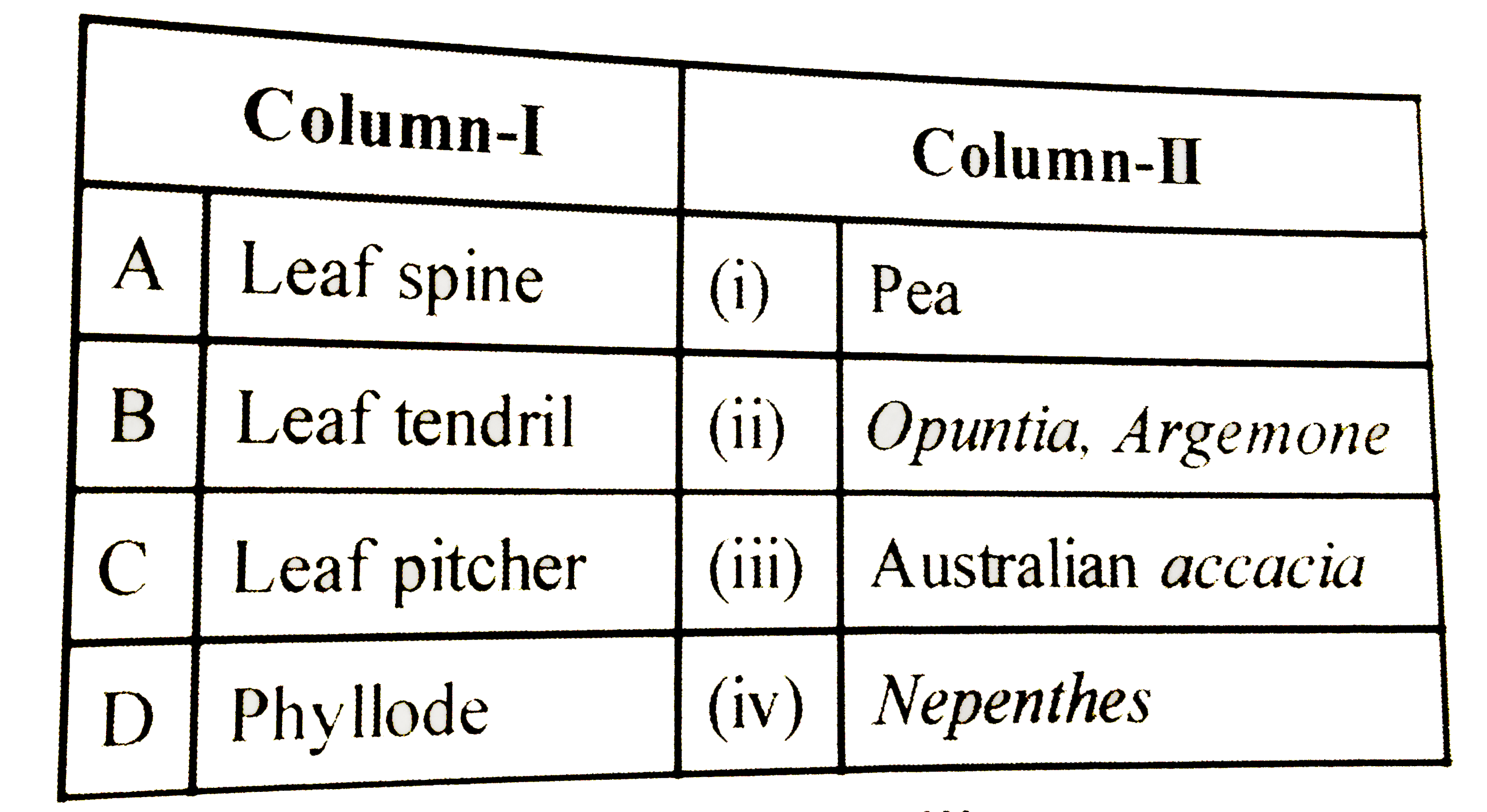Find the correct match with respect to habitat loss.
Plant-pollinator mutualism -Co-extinction
Extinction of steller's sea cow - Degradation of habitat by pollution
Clarias gariepinus - Invasive weed species
Amazonian rainforests - Deforestation for cultivation of cotton
The correct Answer is:A
To find the correct match with respect to habitat loss, we need to analyze the options provided and understand the concept of habitat loss and its implications on ecosystems.
1. Understanding Habitat Loss:
- Habitat loss refers to the destruction or alteration of natural environments, leading to the decline or extinction of species that depend on those habitats. This can result from various human activities, such as deforestation, urbanization, and pollution.
2. Evaluating the Options:
- Option 1: Plant-Pollinator Mutualism: This describes a mutual relationship where plants provide food (nectar) to pollinators (like bees), and in return, pollinators help in the fertilization of plants. If either the plants or the pollinators go extinct, it can lead to co-extinction, which is a significant aspect of habitat loss.
- Option 2: Extinction of the Steller Sea Cow: This refers to the extinction of a species due to overexploitation of its food source (sea urchins). While this is a case of extinction, it does not directly illustrate habitat loss.
- Option 3: Clariace Garypens (Invasive Weed Species): The introduction of invasive species can disrupt local ecosystems, but it does not necessarily equate to habitat loss on a broader scale. It affects specific species rather than the entire habitat.
- Option 4: Amazonian Rainforest Deforestation for Cultivation of Cotton: While deforestation is a significant cause of habitat loss, the claim that it is primarily for cotton cultivation is misleading, as only a small percentage of the rainforest is used for this purpose.
3. Identifying the Correct Match:
- Based on the analysis, the most relevant example of habitat loss is Plant-Pollinator Mutualism. This relationship illustrates how the extinction of one species can lead to the extinction of another, highlighting the interconnectedness of ecosystems and the impact of habitat loss.
Conclusion:
The correct match with respect to habitat loss is Plant-Pollinator Mutualism, as it exemplifies the co-extinction phenomenon that occurs due to habitat degradation.
- Habitat loss refers to the destruction or alteration of natural environments, leading to the decline or extinction of species that depend on those habitats. This can result from various human activities, such as deforestation, urbanization, and pollution.
- Option 1: Plant-Pollinator Mutualism: This describes a mutual relationship where plants provide food (nectar) to pollinators (like bees), and in return, pollinators help in the fertilization of plants. If either the plants or the pollinators go extinct, it can lead to co-extinction, which is a significant aspect of habitat loss.
- Option 2: Extinction of the Steller Sea Cow: This refers to the extinction of a species due to overexploitation of its food source (sea urchins). While this is a case of extinction, it does not directly illustrate habitat loss.
- Option 3: Clariace Garypens (Invasive Weed Species): The introduction of invasive species can disrupt local ecosystems, but it does not necessarily equate to habitat loss on a broader scale. It affects specific species rather than the entire habitat.
- Option 4: Amazonian Rainforest Deforestation for Cultivation of Cotton: While deforestation is a significant cause of habitat loss, the claim that it is primarily for cotton cultivation is misleading, as only a small percentage of the rainforest is used for this purpose.
- Based on the analysis, the most relevant example of habitat loss is Plant-Pollinator Mutualism. This relationship illustrates how the extinction of one species can lead to the extinction of another, highlighting the interconnectedness of ecosystems and the impact of habitat loss.
The correct match with respect to habitat loss is Plant-Pollinator Mutualism, as it exemplifies the co-extinction phenomenon that occurs due to habitat degradation.
Topper's Solved these Questions
Similar Questions
Knowledge Check
Find the correct matches
 Aa-iii, b-i, c-iv, d-iiBa-ii, b-i, c-iii, d-ivCa-iii, b-iv, c-ii, d-iDa-iv, b-iii, c-I, d-ii
Aa-iii, b-i, c-iv, d-iiBa-ii, b-i, c-iii, d-ivCa-iii, b-iv, c-ii, d-iDa-iv, b-iii, c-I, d-iiFind out the correct match
AAmoeba proteus - Kala-azarBLeishmania donovuni-Sleeping sicknessCWucheraria bancrofti - FilariasisDCulex - MalariaFind out the correct match
AAIDS-Bacillus anthracisBSyphilis -Treponema pallidumCGonorrhoea-Leishmania donovaniiDUrethritis - Entamoeba gingivalis.





